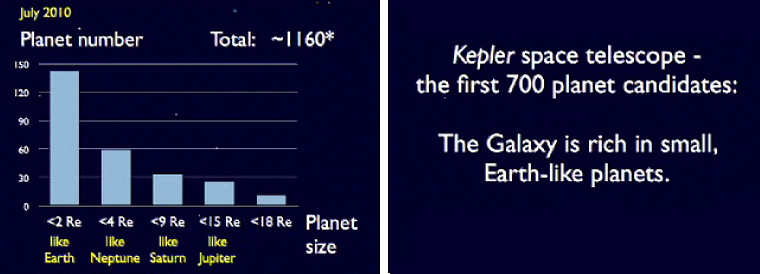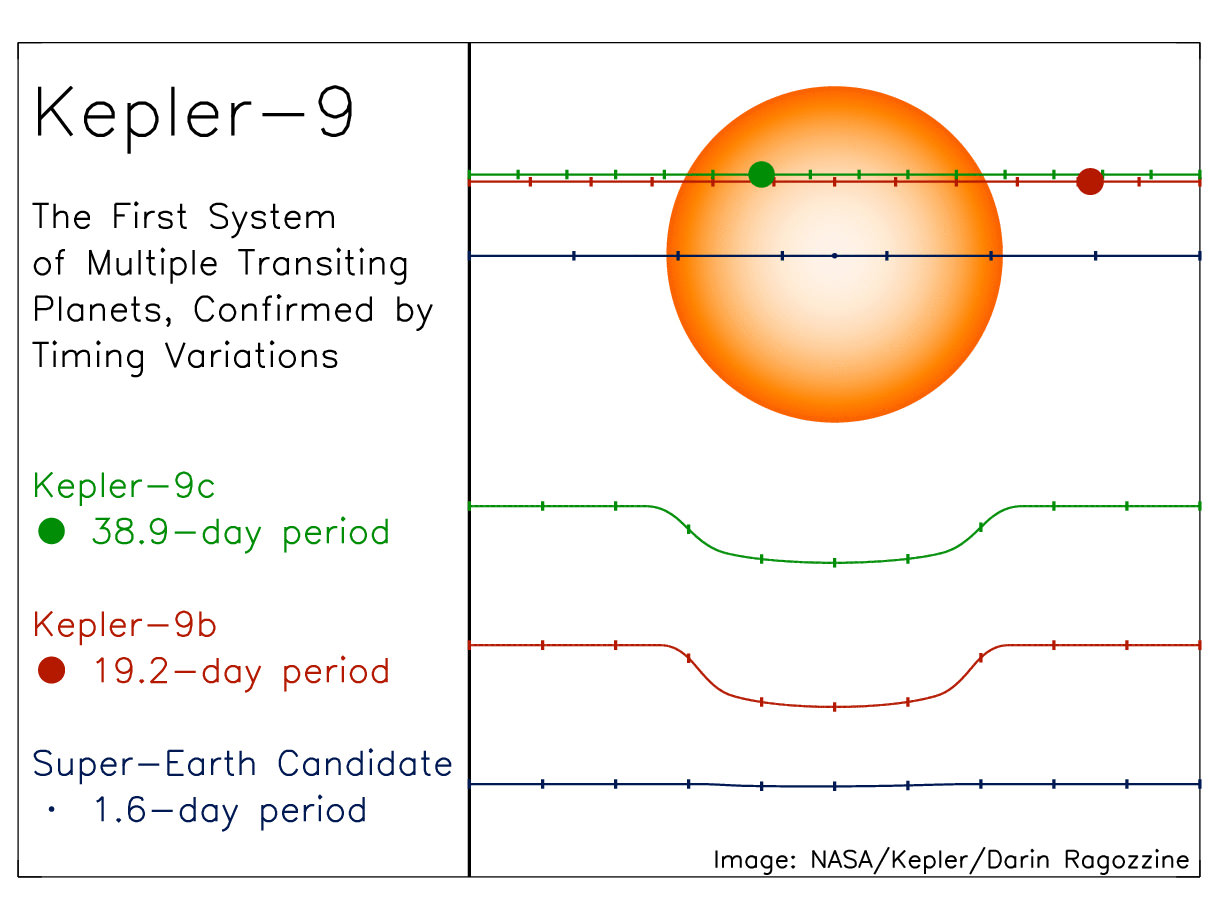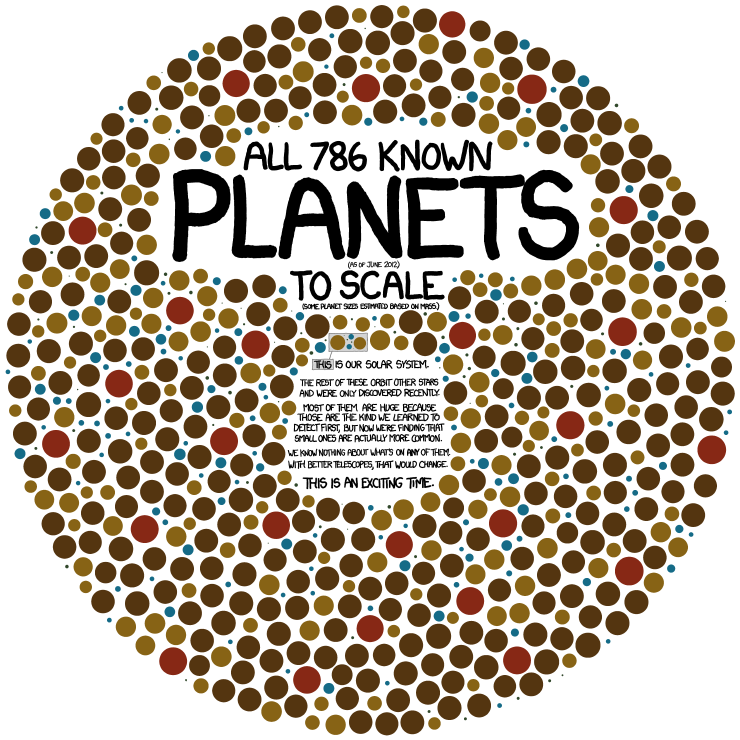Re: NASA Releases Kepler Data on Potential Extrasolar Planet
Posted: Wed Jun 16, 2010 3:46 am
New Worlds to Explore? Kepler Spacecraft Finds 750 Exoplanet Candidates
Universe Today - 15 June 2010
Universe Today - 15 June 2010
The Kepler spacecraft has found over 750 candidates for extrasolar planets, and that is just from data collected in the first 43 days of the spacecraft's observations. "This is the biggest release of candidate planets that has ever happened," said William Borucki, Kepler's lead scientist. "The number of candidate planets is actually greater than all the planets that have been discovered in the last 15 years."
This is an astounding amount of potential exoplanets from data taken during such a short period of time, however Borucki added that they expect only about 50% of these candidates to actually turn out to be planets, as some may be eclipsing binary stars or other artifacts in the data. But still, even half would be the biggest group discovery of exoplanets ever.
And the exciting part is that 706 targets from this first data set have viable exoplanet candidates with sizes from as small as Earth to around the size of Jupiter. The team says the majority have radii less than half that of Jupiter.
The Kepler team has found so many candidates, they are sharing. They will keep the top 400 candidates to verify and confirm with observations using other telescopes – with observations done by Kepler team members. And today they have released the other 350 candidates, including five potential multiple planet systems.
However, some astronomers are upset about this and think the Kepler team should release all of their findings from the first year, as is typically done with NASA data.
- Papers of Interest:
Characteristics of Kepler Planetary Candidates Based on the First Data Set:
The Majority are Found to be Neptune-Size and Smaller- lanl.arXiv.org > astro-ph > arXiv:1006.2799 > 14 Jun 2010
- arXiv.org > astro-ph > arXiv:1006.2763 > 14 Jun 2010



